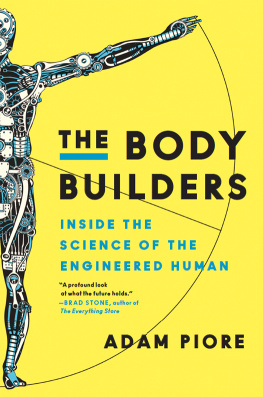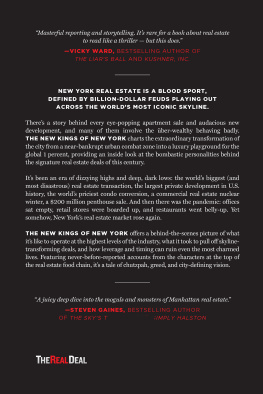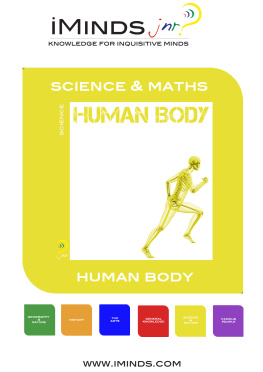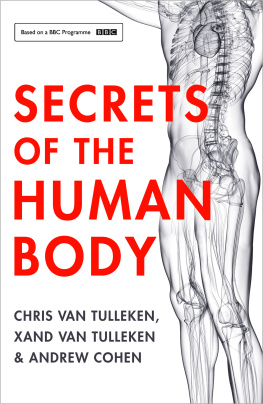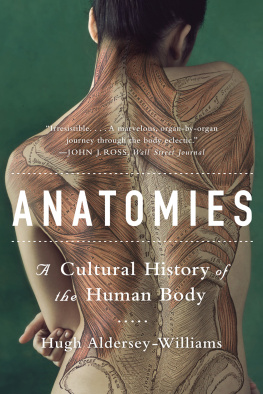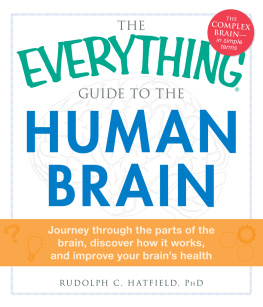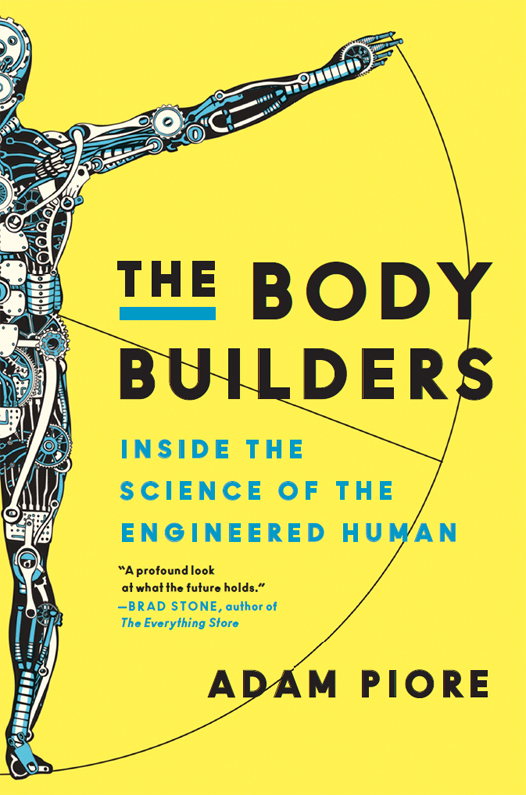This is a book about science and medicine. But the journey that led to it began about as far away as one can get from the antiseptic, data-driven confines one normally associates with these pursuits. In fact, it began so far from a laboratory or operating room that Im almost reluctant to chronicle it here, for fear I will drive away some of the readers hoping to delve into the mysteries of disciplines such as neuroscience, biomechanics, genetic engineering, and the like. Those readers will have to trust me. Well get there.
For me, this book began on a sunny hillside atop the campus of the University of California, Santa Cruz, in the 1990s. I was sitting cross-legged, surrounded by other students, gazing out across green athletic fields and down over redwood-studded hills upon the blue, pristine stillness of the Pacific Ocean. The curving, rocky coastline of Monterey Bay stretched out before me. It was the kind of view that calms the soul and evokes endless possibilities and adventure.
I was a freshman in college and officially in class. But this was like no class I had ever attended before. I thought of my friends back east, sitting inside, soon to be snowbound. Of high school malaise, feeling penned in and hearing the Charlie Brown drone of a teacher as I daydreamed of other places. Places like this. It seemed amazing to me that I should be here, in class. Who knew this was possible?
But then, possibilities were the point. The class was called Humanistic Psychology, and my TA, a man named Jim Brown, thought this was an appropriate setting to introduce us to its optimistic, unapologetically new-agey focus. It centered on something called the human potential movement, a kind of psychology nurtured on the stoned utopianism and creative anarchy of the 1960s counterculture. I was eighteen, still carrying the remnants of my own special blend of adolescent miseries, resentments, and fears. And I was spellbound.
Humanistic psychology was about human transformation, about breaking free of that which limits us and holds us back. It was a discipline that was in part a reaction to the often pessimistic approaches of traditional psychoanalysis and behaviorism, approaches that focused on understanding what caused the neuroses that warp the way we perceive the world or cause us to behave pathologically. Humanistic psychologists like Abraham Maslow were interested in the next step. What did it look like when individuals were able to let go of their disappointments, their fears, and transcend the wounds of the past? All of us are motivated, if given the choice, Maslow argued, to achieve our full potential as human beingsto self-actualize, to find happiness, embrace creativity, find nurturing relationships, and move beyond the things that hold us back. To study this, Maslow looked not to those among us who were suffering, but to those who were thriving. What did they have in common? And how was it that they had become self-actualized?
It is as if Freud supplied us the sick half of psychology and we must now fill it out with the healthy half, Maslow wrote in 1968.
Later, when I became a journalist and foreign correspondent, and first interviewed survivors of Pol Pots genocide in Cambodia, I began to question the value of Maslow. One afternoon, standing on a rutted road in the countryside, I asked a stooped, toothless beggar what her thoughts were on a United Nations tribunal to try the surviving leaders of the murderous Khmer Rouge regime. Tears began to stream down her face. They killed my children, she said. And that is why I am like this.
What did Abraham Maslow have to teach someone who had been through something like that, I wondered? How was self-actualization even relevantnot just for her, but for everyone elsein a place where such injustices could occur? There was nothing about what I had studied in college, it seemed then, that applied in a country like this.
But eventually I would come to think about these questions in a new way. I had arrived just as Cambodia seemed to be emerging from thirty years of civil war. The people I met were still grappling with the legacy of the brutal four-year period in the 1970s when one in four individuals died of starvation, murder, and diseasea cataclysm that had ripped apart the entire society and left all who survived traumatized and broken. The stories I heard were so tragic they often brought me to tears.
Yet the traditional Khmer New Year that first spring in 1999 was a huge, festive outpouring. Just the year before, people had been afraid to venture out, in the wake of the 1997 coup dtat. Now they thronged the streets and alleyways outside my apartment in downtown Phnom Penh, dancing and eating and celebrating. I had seen the pictures of hollow-eyed refugees. Now I watched children roam free. The local mayor had transformed a washed-out patch of dirt next to the Mekong River from a muddy morass into a park with lush grass and flowers, a place where families could picnic. The survivors around me were not grim; they were joyous. You could see it in their faces, euphoria and relief, renewal and resilience. And I found its appearance in what I had mistakenly taken to be a hopeless desert of sadness and loss, far more powerful than anything I could have imagined.
How was this joy possible? Even the most unimaginable calamity, it seemed, had not crushed the humanity of the people around me, and the ability to embrace the moment and each other. In fact, it seemed to make it burn even more brightly. Where did this remarkable resilience, this joy, come from? And why did it speak so powerfully to me?
Sometimes the most inspiring stories, the ones that show us what were really capable of, the ones that show us what is really important, emerge from the worst tragedies we can imagine. It wasnt just human potential that had so fascinated me on that hillside in California, I realized, but the resilience of the human spirit. That inherent urge, instinct, momentum to find, when we lose a part of ourselves, a way to be whole againnot just to survive but to thrive. Ive always been fascinated by what it is that makes people who have experienced setbacks able to move on and look ahead.
You may ask what any of this has to do with those long words I alluded to in the beginning of this introduction. How could neuroscience, biomechanics, and genetic engineering possibly relate to Pol Pot or to humanistic psychology?
I have chosen to write a science book, not a story about psychological trauma, Cambodian history, or Abraham Maslows hierarchy of needs, because today some of the most extreme and exciting examples of the triumph of human potential and resilience are being unleashed by medicine and science. This is something I experienced quite by accident. After returning home from my Cambodian adventures, working at Newsweek, covering 9/11, traveling to Iraq, I met a bionic engineer, named Hugh Herr, with a story that so intrigued and inspired me, it made me look at science and technology in a new way. I followed the thread of the story he was part ofone involving neuroscience, biology, and amazing advances that are transforming what is possible. And as I got to know more people whose lives had been profoundly affected by the quiet revolution occurring in labs and clinics around the nation, their stories began to work the same kind of ineffable magic I first encountered on the streets of Phnom Penh in the 1990s.
This book is largely about a field called bioengineering, and the way that scientists, doctors, and sometimes patients themselves are using it to unlock resilience in human bodies and minds that previous generations could only have guessed was there. Though the subjects I explore highlight what could turn out to be some of our eras most dramatic scientific feats in neuroscience, regenerative medicine, pharmacology, and bionics, this is not meant to be a clinical, intellectual tome about the workings of the human body and mind. This is a book about people who refuse to give up. When I set out to report it, I went looking for people helping themselves and others regain things they thought were gone foreverthe ability to run and dance, to see a mountain in the distance, to recognize a loved one, even simply to communicate. The things, in other words, that makes us feel most human.

